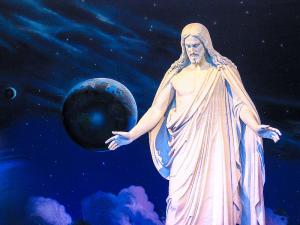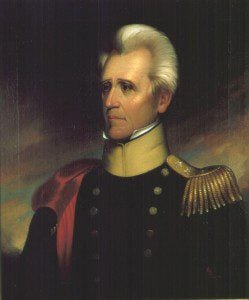Mormonism has been secularizing since 1833. (For those keeping score at home, that’s three years after Mormonism’s institutional birth.) Politics—or more specifically, Mormons’ engagement with and capitulation to the secular nation-state—is the primary culprit.
“Secularization” is a loaded term, carrying for many the notion of anti-religion. But by saying that Mormonism has secularized I’m not suggesting that Mormonism is secular, in the sense of not being oriented toward the sacred. And I’m certainly not making an argument about whether the LDS Church is “true”—a theological claim based in large part on subjective personal experience and belief. Rather, I’m invoking an academic meaning of secularization as, in sociologist José Casanova’s words, “a process of functional differentiation and emancipation of the secular spheres—primarily the state, the economy, and science—from the religious sphere and the concomitant differentiation and specialization of religion within its own newly found religious sphere” (Casanova, Public Religions in the Modern World [1994], 19).
The world elucidated in Joseph Smith’s early revelations does not contain differentiated spheres in which politics, economics, and science are emancipated from religion. Early Mormonism was a totalizing religious system—I like the term “sacred cosmos”—in which there was no clear distinction between the religious and the secular, the sacred and profane. In a revelation just a few months after the organization of the church in 1830, Smith recorded God as pronouncing, “all things unto me are spiritual, and not at any time have I given unto you a law which was temporal . . . for my commandments are spiritual; they are not natural nor temporal” (Doctrine & Covenants 29:34). Smith and the early Mormons clearly interpreted this to mean that all things fell under the scope of God’s authority. This understanding undergirded their remarkable experiment in not just religion-making but world-making as well: the Latter-day Saints’ Zion was a all-encompassing political, economic, social, and spiritual kingdom.
One of Joseph Smith’s early revelations, received in March 1831, helped flesh out the political implications of Zion. The world soon would be awash in apocalyptic violence, the revelation prophesied, but God’s people were not to participate in this bloodletting. Instead, the elders were commanded to gather people to Zion, “a land of peace, a city of refuge, a place of safety.” Zion was to be a cosmopolitan community of peace: “And there shall be gathered unto it out of every nation under heaven; and it shall be the only people that shall not be at war with one another” (D&C 45:63-70). Significantly, in this and other early Mormon prophecies, the nation-state—even America—played no special role, and was rarely mentioned, except as the stage for ungodly violence and wickedness.
The violent persecution of the Latter-day Saints in Missouri in 1833 changed their attitudes and orientation toward the state. Prompted by further revelations, they formally sought redress from government officials, and then, in 1834, Smith organized a military-style march from Ohio to Missouri based in part on what turned out to be a false promise of armed protection from the Missouri governor. This turn of events marked a rupture in the early Mormon sacred cosmos, beginning the turn from a radical millenarian worldview in which God was the sole sovereign in the universe and all the nations of the earth merely ephemeral placeholders, to a more pliant (and politically compliant) notion of overlapping divine and temporal sovereignties. In short, the Missouri persecutions led the Saints to subordinate themselves to the logic of the nation-state, thus differentiating the domain of God’s sovereignty from the state’s sovereignty.
An 1835 declaration on government—not a revelation but canonized in LDS scripture—reified the division between “human laws” which regulate “our interests as individuals and nations,” and “divine laws given of heaven,” which are limited to “spiritual concerns, for faith and worship” (D&C 134:6). The distinction is clear: God rules over heavenly concerns and properly constituted governments exercise authority over earthly matters. This is a textbook definition of differentiation—and of secularization.
Secularization is never a linear process: Brigham Young’s kingdom in the West, especially in its early phase, constituted a genuine retreat from differentiated spheres. But when Joseph Smith ran for president in 1844, he did so as “General Smith” rather than the “Prophet Joseph”—a strategic and pragmatic move, to be sure, but one revealing accommodation to differentiated spheres of religion and politics. When in the 1890s, in the wake of severe federal pressure and prosecution, the LDS Church gave up polygamy, communitarian economics, and its own political party, and sent its sons to fight for the nation in the Spanish-American War, secularization continued apace. And when the twenty-first-century church dogmatically asserts its political neutrality, and repeatedly emphasizes that it offers no specific political guidance to its members as voters or politicians, and when Mormon politicians of all stripes disavow that their private religious beliefs dictate their public politics, then the process of secularization, at least in the political realm, is virtually complete.
Of course, Mormonism is certainly not alone among religious movements in being forced to navigate the thorny path of applying—and often abandoning—otherworldly religious ideals in the inherently fraught sphere of secular politics. But especially this year, when so much talk has been and will be of the relationship between Mormonism and politics, it may be helpful to keep in mind that in fact the two have never stood further apart.











